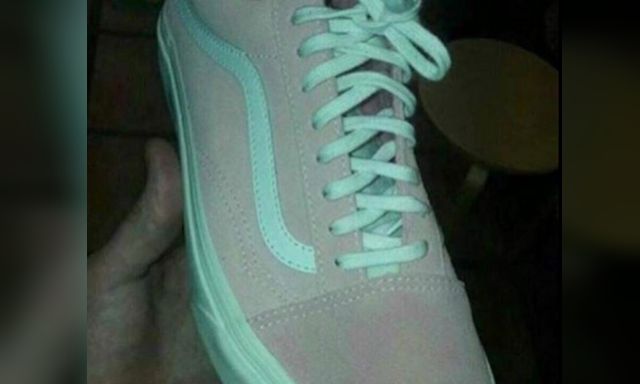The Latest Viral Image with Colors No One Can Agree Upon
May 20, 2019
One day last week, as soon as students entered Journalism class, Mr. Whitehead surveyed them about what color they saw in a photo of a shoe. Surprisingly, some said white and pink, while others said teal and gray. The photo that Mr. Whitehead used has been going viral around the Internet, receiving two distinct responses: white and pink or teal and gray. However, this is not unprecedented. There have been previous viral phenomena, such as “the dress.” In the case of “the dress,” people were torn between blue and black or white and gold. Why do people see different colors from the same photo? Could the colors we see possibly determine whether we are right- or left-brain dominant? Well, what do you see in the photo? (Please submit your answer in the current Echo poll!)
“The dress” was a viral Internet sensation in February of 2015. Its origin can be traced back to a Tumblr post by Scottish musician Caitlin McNeill that asked its viewers, “guys please help me—is this dress white and gold, or blue and black?” Celebrities such as Taylor Swift, Kim Kardashian West, and Ellen DeGeneres even joined the debate, tweeting the colors they saw as well as feelings of confusion and frustration. The more recent sensation, “the shoe,” is similar to the previously mentioned “the dress” but is a little less popular.
After “the dress” and “the shoe,” one common question arises: why do people perceive things differently? Neuroscientists and psychologists have tried to solve this question through scientific investigation in the fields of neuroscience and vision. They researched for the rationale behind the difference in human color perception. However, until now, they are still searching for a definite consensus.
Nevertheless, several rational theories and studies have been developed. Neuroscientists Bevil Conway and Jay Neitz explained, “Your visual system is looking at this thing, and you’re trying to discount the chromatic bias of the daylight axis….people either discount the blue side, in which case they end up seeing white and gold, or discount the gold side, in which case they end up with blue and black.” Neuroscientist and psychologist Pascal Wallisch suggested a different theory. He stated that the color you see depends on whether you are a early riser or night owl, white and gold if the former and blue and black if the latter. Although it is not 100 percent valid, it is a reasonable theory.
Following “the shoe,” phenomenon rumors spread that if you see teal and gray, you are left-brain dominant, and if you see pink and white, you are right-brain dominant. However, this is merely a rumor and is not scientifically supported. According to a clinical professor from the University of Hong Kong in an article from Young Post, people are curious to know about themselves and therefore try to link the colors one sees as clues about oneself. Since nearly everyone shows this trait and feels a desire to know more about themselves, the rumors spread.
“The dress” and “the shoe” are two phenomena that shook the world into confusion. Through the confusion, curiosity was aroused and the search for the reason behind the illusion began. These phenomena are capturing the attention of the public and encouraging inquiry into neuroscience and vision, thus provoking research in these areas. The future holds the key to unraveling the unknown reason for why some see one color, and some another.

















































































































































